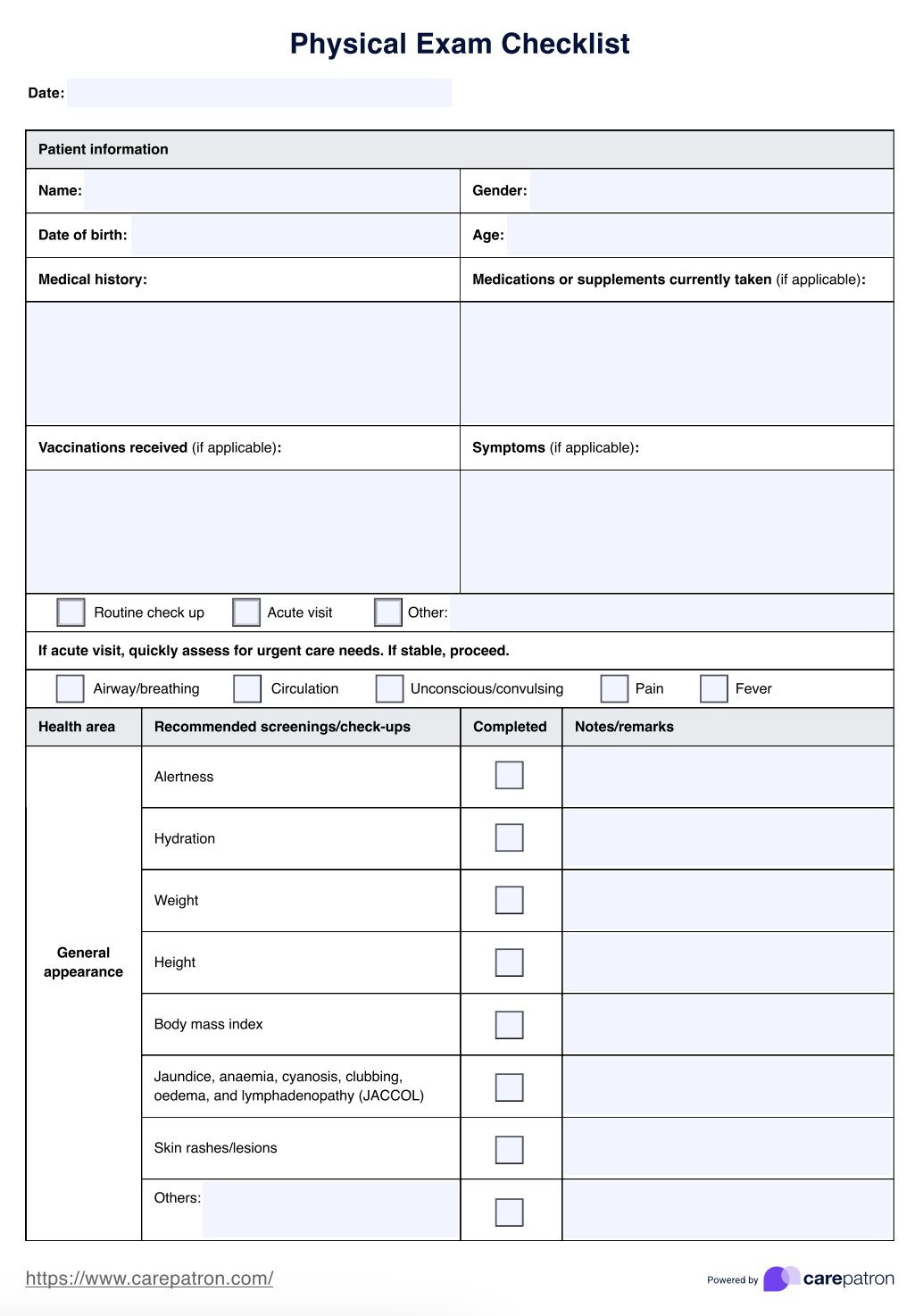You can create a Physical Exam Checklist by opening your note-taking app or software and creating a document from there. If you’re on Carepatron, you can use our note-taking feature, which has the necessary fields to produce a checklist.

Physical Exam Checklist
Use or provide your patient with a Physical Exam Checklist template to ensure they undergo needed evaluations of their overall physical health.
Use Template
Physical Exam Checklist Template
Commonly asked questions
Physical Exam Checklists are used during a patient’s annual physical exam and consultations or appointments wherein the referring physician diagnoses, treats, or provides preventive care.
The Physical Exam Checklists are used similarly to other checklists where one can document or keep track of important information.
EHR and practice management software
Get started for free
*No credit card required
Free
$0/usd
Unlimited clients
Telehealth
1GB of storage
Client portal text
Automated billing and online payments











